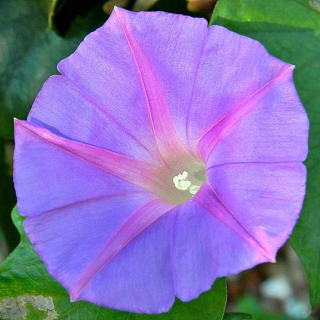

Oceanblue morning glory is a very cute climbing vine with abundant and spectacular blooms of a mesmerizing deep blue color.
Key oceanblue morning glory facts
Name – Ipomoea
Family – Convolvulaceae
Type – climbing vine, annual
Height – 10 to 20 feet (3 to 6 meters)
Exposure – full sun
Soil – rich enough
Foliage – deciduous
Flowering – June to November
Although it can be quite invasive, oceanblue morning glory requires very little care and will quickly satisfy you whether in the garden or on a terrace.
In tropical environments it grows as a perennial, but in colder latitudes oceanblue morning glory grows as an annual. It won’t grow back from the same plant year after year.
Sow under cover starting from the month of March, transplant in April and plant in the ground starting from the month of May in a blend of earth, soil mix and organic soil conditioner.
Growing oceanblue morning glory in pots
Growing oceanblue morning glory in pots is perfectly possible and it even makes a lot of sense to decorate a terrace or balcony.
Oceanblue morning glory has the advantage of being very easy to care for and only requires very little attention.
Pruning oceanblue morning glory
It doesn’t need any pruning because oceanblue morning glory only lives for a year.
If, however, it starts spreading too far, simply cut off a few stems whenever you feel it needs to be reduced.
Watering oceanblue morning glory
Oceanblue morning glory must be watered often, especially in case of elevated temperature.
Mulch along the foot of it will help keep the moisture in after having watered, and thus reduces the frequency that you’ll need to do it.

It has the advantage of twining and so will attach to lattices, fences or other objects on its own.
Its blooming is abundant and its flowers form nice trumpets. Their lifespan is quite short, but they will tirelessly re-seed themselves.
Regular but moderate watering is advised during the blooming.
Remember to water it in the evening to reduce evaporation and thus save on water, a rare resource.